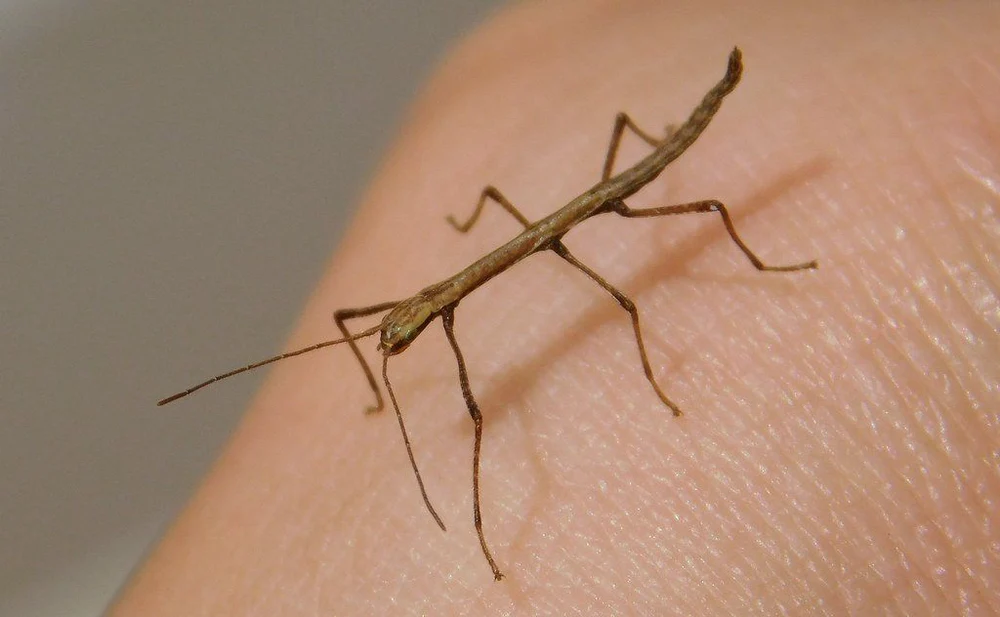
Indian stick insects (Carausius morosus) are slender, nocturnal insects native to India, typically reaching about 3-4 inches in length. Known as "laboratory stick insects" due to their popularity in research settings, they've become widely invasive and can now be found in many regions including the United States, Mexico, Portugal, France, England, South Africa, Madagascar, and Taiwan.
These insects have evolved a remarkable camouflage, closely resembling sticks or twigs, particularly when they tuck their legs close to their bodies. They generally feature an even brown coloration and bark-like textures, and notably, they don't have wings. Indian stick insects are highly favored among insect hobbyists due to their ease of care and relatively short lifespan, typically about one year.
Terrarium Size Recommendations
The optimal enclosure size follows this formula:
- Length: 2 times the insect's body length
- Width: 2 times the insect's body length
- Height: 3 times the insect's body length
Height is crucial because stick insects need vertical space to molt (shed their exoskeleton) properly. For an adult Indian stick insect, the minimum enclosure size should be about 8 inches long, 8 inches wide, and 12 inches high. Suitable materials include glass, plastic, or mesh. If housing multiple stick insects together, remember to increase the enclosure size accordingly, especially horizontally.
Lighting
Specialized lighting isn't usually necessary if your stick insect's enclosure is placed in an area that receives approximately 12 hours of natural or artificial bright light daily. If the enclosure is in a darker location or contains live plants, consider adding a small white fluorescent or LED grow light with a 6500K color temperature.
Temperature
Indian stick insects thrive at temperatures ranging from 63°F to 77°F (17°C to 25°C), which means typical room temperatures usually suffice. Supplemental heating isn't necessary, but ensure adequate ventilation and cooling during warmer periods. A digital thermometer placed centrally within the enclosure helps accurately monitor conditions.
Humidity
Maintaining appropriate humidity is important, particularly for successful molting. However, Indian stick insects are quite hardy and adaptable. Simply mist the enclosure lightly every evening using distilled or chlorine-free treated water. This daily misting provides both humidity and drinking water.
Suitable Substrates
Use a substrate layer of about 1-2 inches at the enclosure’s bottom to help regulate humidity. Recommended substrates include:
- Zoo Med Creatures Eco Soil
- Zoo Med Creature Soil
- Zoo Med ReptiBark
- Eco Earth Plantation Soil
- Exo Terra Forest Bark
Replace the substrate weekly and thoroughly clean the enclosure with hot water to maintain hygiene.
Enclosure Decorations
A well-decorated environment helps reduce stress, promotes natural behaviors, and extends your pet’s lifespan. Include climbing structures and hiding spots using items such as:
- Cork logs or flats
- Twigs
- Thin vines
- Artificial foliage
Secure these items at varying angles with hot glue. Ensure ample clear vertical space, at least twice your insect's height, for successful molting.
Diet
Stick insects are strictly herbivorous and require constant access to fresh leaves. Keep a fresh leafy branch available, placed in a small water-filled vase to maintain freshness. Suitable leaf options include:
- Blackberry (mature leaves only)
- Oak
- Hawthorn
- Azalea
- Camellia
- Geranium
- Hibiscus
- Ivy
- Jasmine
- Privet
- Pyracantha
- Rose
- Hazel
During winter, oak leaves can be frozen for use, and blackberry leaves typically remain accessible. Romaine lettuce is an acceptable temporary substitute. Avoid sourcing leaves from garden centers, florists, or roadside locations due to potential chemical contamination.
Handling
While most insects prefer minimal handling, Indian stick insects usually tolerate gentle handling fairly well. To safely pick one up, gently place your hand under its front legs and coax it forward with your other hand, allowing it to step onto you voluntarily. Never forcefully grab your stick insect, as they are delicate and easily injured. If startled, your insect may freeze and fall, which is a normal defensive reaction but should be avoided to prevent harm.





Leave a comment Use WYSIWYG